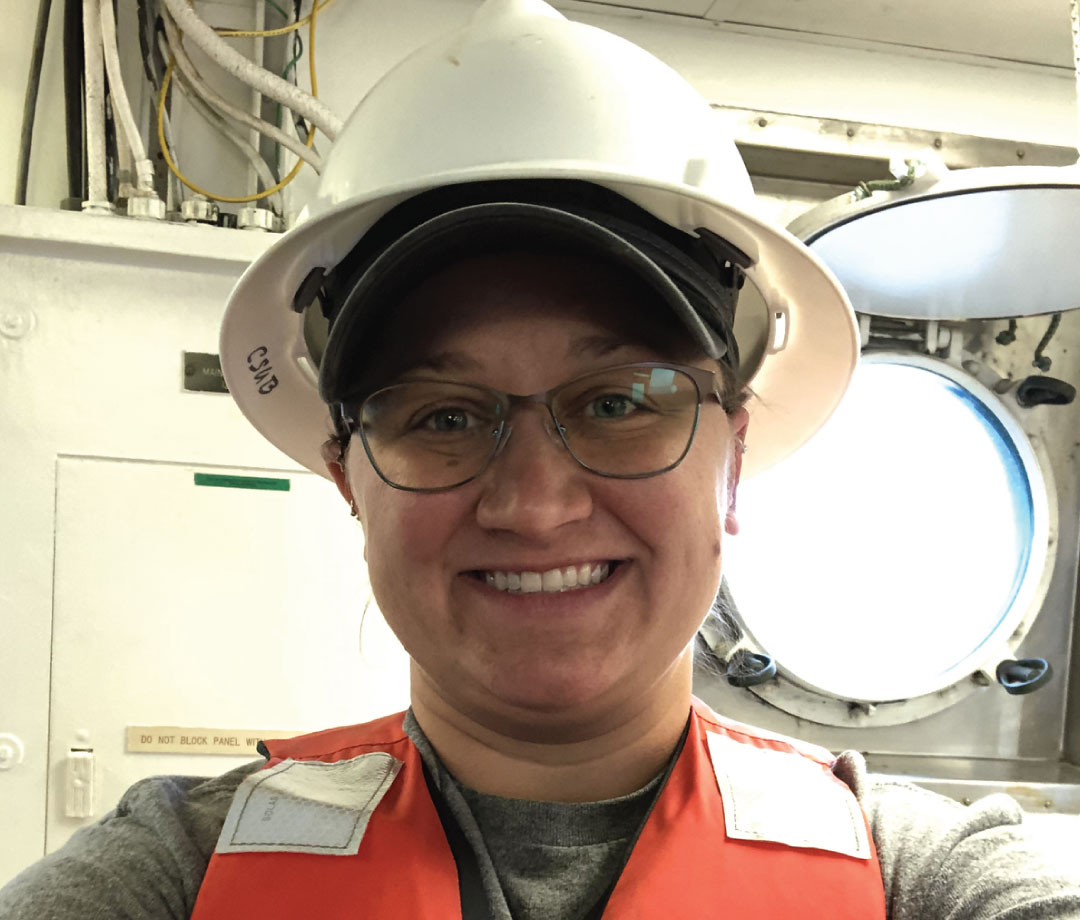Dr. Ashley Burkett
Boone Pickens School of Geology
At the seabed of the world’s ocean, tiny, single-celled organisms make shells about the size of a grain of sand and feed on material that rains down from above. It is these tiny creatures, called foraminifera, which drive Dr. Ashley Burkett to collect samples from the seafloor. Dr. Burkett — who joined the Boone Pickens School of Geology in 2018 — has in fact visited the seafloor herself in the deep-sea submersible Alvin (the same one that explored the wreckage of the Titanic), collecting samples of living foraminifera from the ocean floor.
The shells of foraminifera are useful not only because they are around today, but because they have an extensive presence in the fossil record as far back 500 million years ago. Observations of how these organisms react to changes in their environments in today’s ocean are used to reconstruct climates of the past (such as extinction events), which are useful tools for determining how changes in our present climate are likely to manifest.
Dr. Burkett has spent a total of 128 days on scientific vessels collecting seafloor samples and is conducting high resolution MicroCT scanning to create 3D reconstructions and examine foraminifera in even greater detail. She is even using these techniques to document and name not only a new species, but also an entire new genus of foraminifera discovered through genetic investigations.
Although her fossils are tiny, Dr. Burkett’s enthusiasm for them is giant, and her teaching and outreach activities engage the imagination and encourage exploration. Her work generating 3D models of fossils has extended into her outreach and teaching activities where she uses 3D printed materials to facilitate access to these tiny fossils even without a microscope.
Dr. Burkett is actively working to bring microfossils at OSU into the technologic age and is excited to apply these new techniques to her growing collection. In 2020 she coordinated the donation of thousands of samples from the Chevron Core Repository and now has created a new microfossil collection for use in research and teaching.
Although these materials are still being unpacked, it is estimated that the donation contains a minimum of 25,000 micropaleontological slides (containing several to 100 individual foraminifera per slide) and 94,000 bags of processed oil and gas exploration core used by Chevron from about the 1930s to the early 2000’s for biostratigraphy (or dating of the geologic layers). When the collection has been fully digitized, a searchable database will allow users to sort through geologic ages, drillsite locations, and even photographs of the microfossils in the archive. It is Dr. Burkett’s hope that this new collection will spur future studies, workshops and even more donations to OSU.
After a two-year sailing hiatus, Dr. Burkett will be setting sail once again in February 2022 on the Joides Resolution, where she’ll spend 61 days at sea. Not only will this be her longest research expedition, but it will also expand her expertise further back in time and provide a detailed look at some of the most major climate events, including the K/T extinction event that ended the reign of the dinosaurs on earth.

